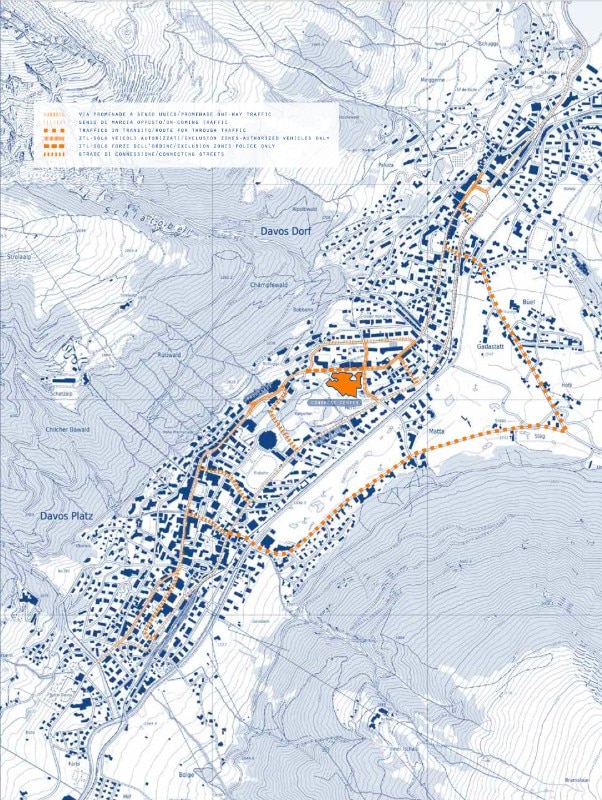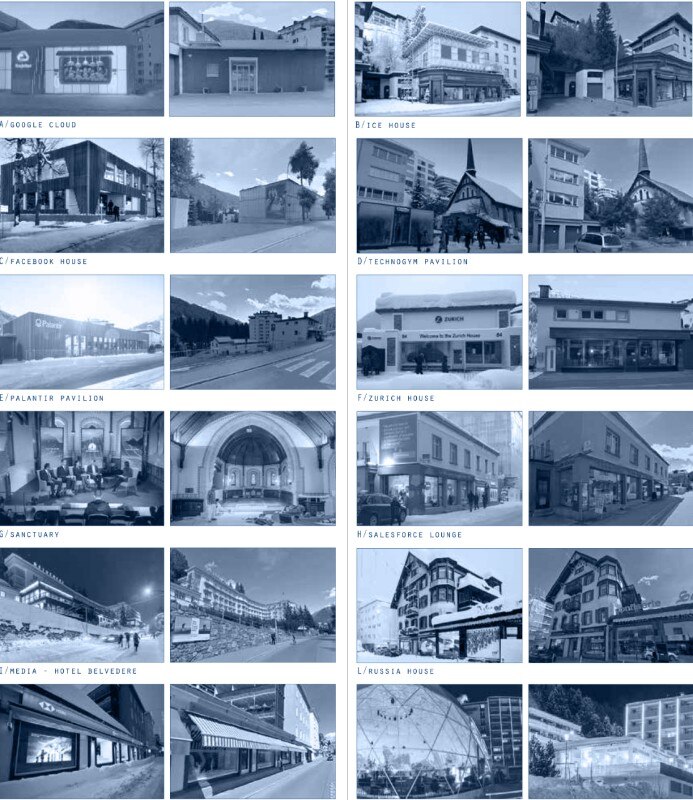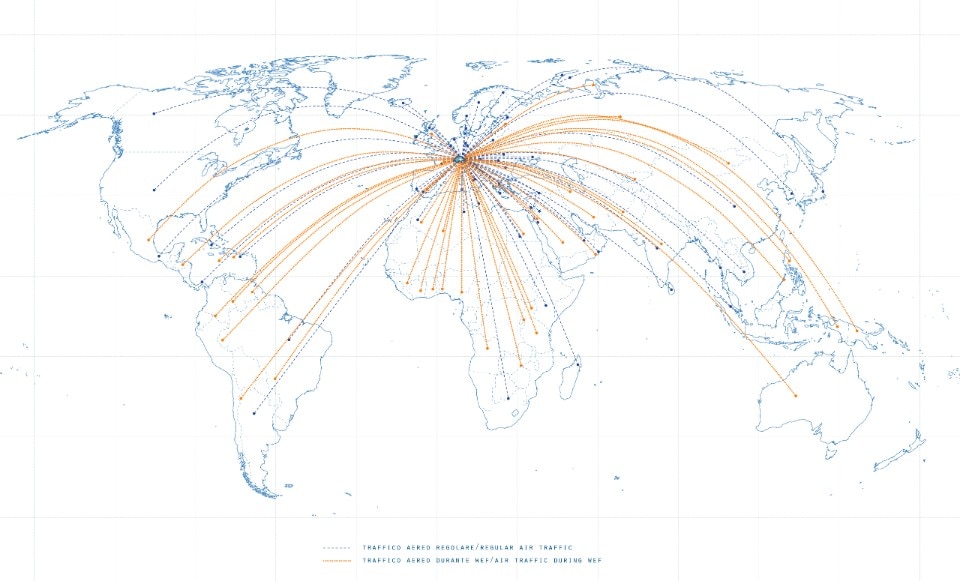We all know Davos as the place where once a year world leaders, business executives and influential celebrities gather to discuss key issues shaping the future of our planet.
Yet, besides institutional meetings and fancy cocktail parties, what is it that really happens for a few days each January at this resort town nestled in the Swiss Alps?
The airspace above Zurich certainly gets extremely crowded. Around 3,000 participants fly in from over 110 countries with private jets and helicopters to attend the World Economic Forum (WEF). Besides a purpose-built heliport on the edge of Davos, this year (22–25 January 2019) a new temporary station has also been added just near the Congress Centre, where the Forum takes place. For both logistic and security purposes, the urban traffic is highly regulated. Road blocks prevent access to restricted areas and shuttle bus services guarantee smooth connections downtown.
But it is only when you take a walk along the Promenade, one of the two main streets, that you actually realise the impact that exceptional events like this can have on small places like Davos. As if immersed in a movie set, the city dramatically changes its urban appearance, its spatial characteristics, and its everyday activities to best suit the needs of the event and leverage opportunities.

“If a WEF participant came back during the summer, he or she wouldn’t recognize the town,” says Dolores Mark press officer of the Kirchner Museum.
Temporary buildings and pavilions sit in between (or even on top of) local stores and residences. Pop-up structures take over portions of the Promenade’s public space.
Facebook, for instance, builds its own facility next to the Kirchner Museum: a three-storey wooden structure.
Corporate signs and advertising billboards cover storefronts and tall building facades at every corner. Ad-hoc infrastructures for security and media networks also contribute to the tangible morphing of Davos.
Even the local church gets transformed into the “sanctuary”. Rented out by multinational corporates and technology giants, the church becomes a space for CEOs and VIPs to meet and share ideas. Here is where the real deals are done.
So it comes as no surprise that, to get the best spots along the Promenade, the keys of clothing stores or hairdressing salons go for high prices. Barbara Lanz, for example, has sublet her salon to Generali for the past few editions. She then calls at hotels and apartments with her suitcase to fix the hair of participants at the event. A profitable twist to her everyday business.
Besides the short-term and spatially evident changes, more hidden and yet very profound alterations take place at both the societal and economic levels. With prices skyrocketing, during the Forum property owners in Davos earn a year’s normal rent in just a few weeks. Given the small incentive for long-term lets, many spaces remain vacant before and after the WEF. In 2018 as many as 70 units were empty.
This triggers a chain reaction, with the place losing its attraction and forcing local stores to relocate or shut down.

Then for businesses like food stores, the Forum is a matter of survival. During the WEF, the owner of Früchte Waser imports fruit and vegetables from around the world to please the demanding multicultural palates of guests. But not all the locals are as smiling as Mr. Waser.
For Daniel Paschoud, who runs a ski rental store, the WEF takes instead of giving. In the past, the Forum was also a chance for the personalities and their families to enjoy some time off and go skiing. Today, you only see suits and ties down here and empty slopes up there.
For some residents this is a good time to leave the town on vacation, escaping from security checkpoints on the streets and the sight of snipers on the rooftops.
Whether renting out hairdressing salons or giving up ski instructor jobs to chauffeur business executives, certainly the life of people in Davos is affected by the Forum.
Although the deep structural repercussions are difficult to decode and probably go beyond the WEF, the city has been experiencing this paradox for years now: embracing the opportunities offered by hosting the world’s most important business festival, and at the same time paying a price for it.
Local architects complain that the quality of the built environment hasn’t improved much over time. Though the Forum adds $40 m to the local economy, the architectural context barely benefits from the turnover of this global event. Urban post-Expo sites speak for themselves in this respect.
This year, for the first time, the municipality of Davos has developed a masterplan for coordinating urban traffic flows, regulating temporary structures, and providing design guidelines on converted spaces and corporate signs.
Will these measures eventually result in a positive reaction for the complex urban dynamics of Davos? Will they be enough to smooth out the dichotomous impact on the local community? We will soon find out.


